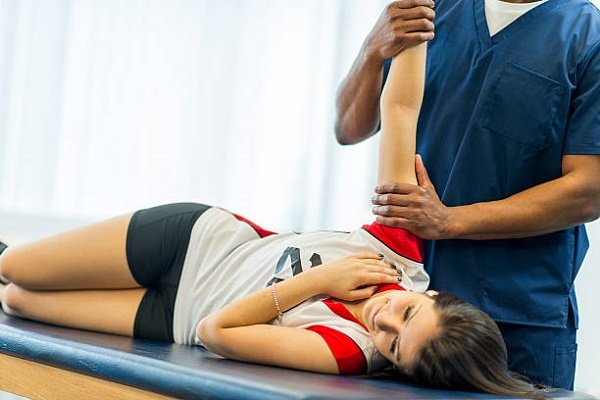Sports Injuries
Home / Sports Injuries
Sports Injuries

Sports injuries are painful, and they’re one of the quickest ways to sideline a good player. No matter what sport you play or how you managed to hurt yourself, the treatment and time it takes to heal from an injury are often similar.
Sports injuries are painful, and they’re one of the quickest ways to sideline a good player. No matter what sport you play or how you managed to hurt yourself, the treatment and time it takes to heal from an injury are often similar.
Immediately after your injury
You can expect a few things to happen within the first few hours of sustaining a muscle injury. Other than the immediate pain, you might experience swelling and bruising. The initial sharp pain may give way to a throbbing ache. The injured area may also be sensitive to movement and tender to touch. You may not be able to use it normally for at least the first few hours.
R.I.C.E. is an acronym that many sports trainers and athletes use to remember how to treat a minor muscle injury. It stands for rest, ice, compress, and elevate.
Rest
Resting is one of the most effective ways to start your healing process. Your injured muscle will be weak and vulnerable to further injury, especially in the first few hours. Take a break from moving it to help it heal.
Ice
The benefits of applying ice are greatest within the first day or two after sustaining an injury. Apply a bag of crushed ice, a bag of frozen veggies, or an ice pack to your injury. It will help relieve pain and prevent swelling by decreasing blood flow to the area. To avoid frostbite, never place the ice directly on your bare skin. Instead, wrap it in a thin cloth or towel before applying it to the injured area. Apply ice for 15 to 20 minutes at a time, and allow your skin to return to normal temperature in between icing.
Compress
An elastic bandage wrapped firmly around your injury can help minimize swelling by preventing the buildup of fluid. It can also help ease pain by keeping the injured area somewhat immobilized. The bandage may not be enough to immobilize the injured area entirely, but it will provide some support and remind you to keep it still.
If the bandage causes tingling or numbness, remove it and rewrap it more loosely. It shouldn’t be so tight that it causes discomfort or interferes with your blood flow. Even gentle compression can help keep fluid from collecting around the injury.
Elevate
Elevating an injury above the level of your heart will helping minimize swelling by allowing fluid to drain away from the area. If you can’t raise it above your heart, try to keep the injured area at the same level as your heart or close to it. If you suffered an injury to your buttocks or hips, try lying down with a pillow or two wedged under your buttocks and lower back to help lift it.
